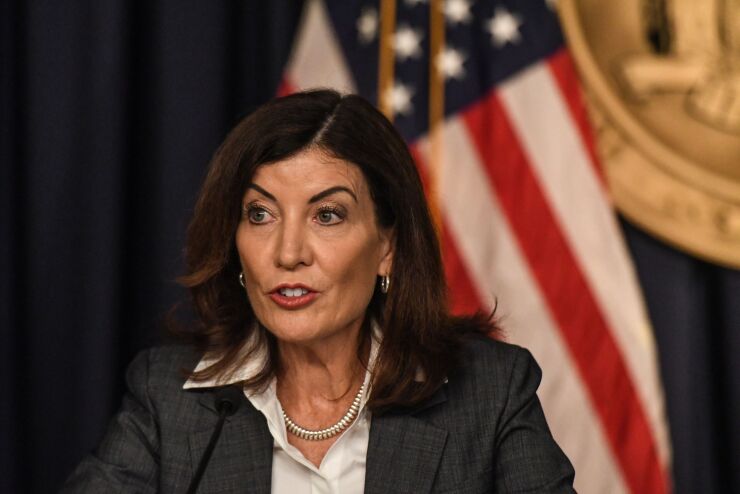
As buy now pay/later lending
The latest move came this week from
The governor's announcement shortly follows guidance on managing BNPL risks from the
"We've been moving toward more regulation for BNPL in the U.S.," said Daniel Keyes, a senior analyst at Javelin Strategy & Research. "It will be over the next couple of years. It won't be all this month."
In an email, Justin Henry, deputy communications director for the governor, said specific legislative language will be unveiled as part of Governer Hochul's executive budget presentation later this month.
It would not be surprising to see other states, especially those that routinely take the most progressive stance on consumer protection, to follow New York's lead, said Eamonn Moran, senior counsel at Norton Rose Fulbright US LLP.
Regulation is especially likely "as this sector continues to rapidly grow and consumers are increasingly turning to BNPL as a low-cost alternative to traditional credit products to pay for everyday and big-ticket purchases," Moran said.
BNPL's definitions vary broadly, with lenders using different business models and different approaches to fees, though it typically refers to a Pay-in-4 model for individual purchases. Additionally, fintechs and banks both offer BNPL and are regulated differently.
While there are no details on specific regulation, the consumer protections will likely include disclosure requirements, dispute resolution and credit-reporting standards, late-fee limits, consumer-data privacy and guidelines to curtail dark patterns and debt accumulation and overextension, according to Moran, adding that these concerns are in line with those from the
"In many ways, when I was reading the N.Y. press release about this, I thought I could have been reading material coming directly from the CFPB," Moran said.
While the CFPB has not yet issued guidance for BNPL lenders to mandate consumer protection at a level similar to credit cards, such guidance should come this year, Moran said.
"I would imagine any such guidance or rules will look very similar to what New York will apparently propose," Moran said.
Other states have taken action on BNPL. California has placed BNPL lending under the California Financing Law since 2020, a standard that says BNPL plans are "loans" under the law, requiring a license, according to Moran. Massachusetts also requires a license and Oregon is considering state regulation for BNPL lending.
"This is something new in New York, the combination of a licensing regime plus BNPL-specific state regulation," Moran said. "It's not yet clear what the scope of the licensing and regulatory regimes will look like, and if all BNPL providers, regardless of size, will be covered."
Outside of the U.S., Sweden — the home country of BNPL lender Klarna — requires merchants to provide a list of payment options that do not contribute to consumer debt. There is also a requirement to offer the bank-operated Swedish payment app. And the U.K. has introduced
The political attention accompanies fast growth for BNPL lending, which became mainstream in the U.S. during the pandemic. BNPL loans used for e-commerce purchases on the first Monday after Thanksgiving in 2023, for example, were 42% over the same period in 2022, according to
As BNPL lending grows, so has the risk.
The accumulation of regulation could also result in BNPL firms taking a dim view of New York. Afterpay, for example,
"Requiring BNPL systems to have a license to operate in New York and giving the aggressive N.Y. Department of Financial Services broad authority to issue regulations will raise the cost of doing business there," said Eric Grover, a principal at Intrepid Ventures.
While the regulations probably won't "kneecap" BNPL lending, a limitation on late fees, which was part of the New Mexico regulations, could have an impact on lenders, Keyes said. "If consumers aren't pressured as much to make payments that could lead to repercussions," he said.






